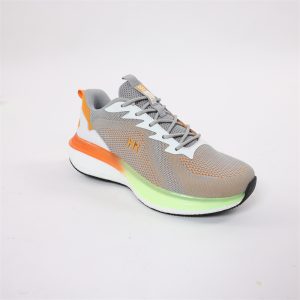Running shoes are not one-size-fits-all. Different runners have different needs, preferences, and goals when it comes to their footwear. That’s why it’s important to choose a running shoe that matches your foot type and running style, as well as the terrain and distance you run on.
In this article, we’ll explain how to find the best running shoe for you based on four factors: running surface, cushioning, gait, and fit.

Running Surface
The first thing to consider when choosing a running shoe is where you plan to run. Do you mostly run on paved roads, sidewalks, or treadmills? Or do you prefer trails, gravel paths, or grass? The type of surface you run on affects the amount of traction, stability, and protection you need from your shoes.
Road-running shoes are designed for smooth and even surfaces. They have flat and flexible soles that provide cushioning and responsiveness. They are also lightweight and breathable to keep your feet comfortable.
Trail-running shoes are designed for rugged and uneven surfaces. They have lugged and grippy soles that provide traction and stability. They are also durable and protective to prevent injuries from rocks, roots, or other obstacles.
Cross-training shoes are designed for gym workouts or any activity that requires more contact with the ground. They have low-profile and stable soles that provide support and balance. They are also versatile and adaptable to different exercises.
Cushioning
The second thing to consider when choosing a running shoe is how much cushioning you want to feel under your feet. Cushioning is the thickness and firmness of the material between your foot and the ground. It affects how much shock absorption, energy return, and ground feel you get from your shoes.
Some runners prefer more cushioning for a soft and plush ride. More cushioning can reduce the impact on your joints and muscles, especially if you run long distances or have a heavy foot strike. However, more cushioning can also make your shoes heavier and less responsive.
Some runners prefer less cushioning for a firm and responsive ride. Less cushioning can increase the efficiency and speed of your stride, especially if you run short distances or have a light foot strike. However, less cushioning can also make your shoes less comfortable and more prone to injuries.
Gait
The third thing to consider when choosing a running shoe is your gait. Your gait is how your foot moves when you run. It includes how much your foot rolls inward (pronation) or outward (supination) when it lands on the ground, and where your foot strikes the ground (heel, midfoot, or forefoot).
Most runners have a neutral gait, which means their foot rolls slightly inward when they run. Neutral runners can wear most types of running shoes, but they may benefit from some arch support and stability features.
Some runners have an overpronated gait, which means their foot rolls excessively inward when they run. Overpronators can experience pain or injuries in their knees, ankles, or arches if they wear the wrong shoes. They need running shoes that provide motion control and stability features to prevent excessive inward rolling.
Some runners have an underrated gait, which means their foot rolls outward when they run. Underpronators can experience pain or injuries in their feet, shins, or hips if they wear the wrong shoes. They need running shoes that provide cushioning and flexibility features to absorb shock and allow natural outward rolling.
Fit
The fourth thing to consider when choosing a running shoe is the fit. The fit is how well the shoe conforms to your foot shape and size. A good fit can prevent blisters, chafing, slipping, or rubbing that can ruin your run.
To find the best fit for your running shoe, you should:
– Measure your foot length and width at the end of the day or after a run, when your feet are slightly swollen.
– Try on shoes with the socks you normally wear for running.
– Leave about a thumb’s width of space between your longest toe and the end of the shoe.
– Make sure the shoe is snug but not tight around your heel, midfoot, and forefoot.
– Check for any areas of discomfort or pressure points.
– Walk or jog around in the shoes to see how they feel.
Choosing the best running shoe for your foot type and running style can make a big difference in your performance, comfort, and injury prevention. By considering these four factors: running surface, cushioning, gait, and fit, you can narrow down your options and find the perfect pair for you.

